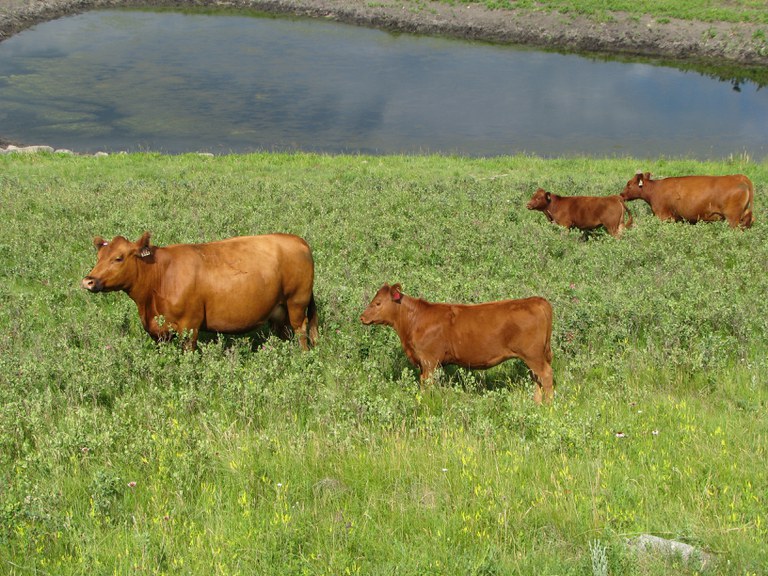Water consumption can be impacted by water quality. Livestock that are provided low-quality water will have reduced water and feed intake, resulting in reduced production.
Certain salts and gases in solution, such as those consisting of sodium, potassium, calcium, magnesium, chloride and sulfate, make water more palatable. However, these same salts and gases can be toxic if present in excess. For more information, refer to NDSU Extension publication AS1764, “Livestock Water Quality.”
Livestock never should be forced to drink dirty or contaminated water. Dirty or stale water can reduce water consumption. Providing grazing livestock with fresh water has been shown to increase weight gains.
Dirty water is a host for disease organisms. Disease can spread rapidly if animals drink from the same water source, so sick animals should be isolated and waterers should be cleaned frequently.
Waterers can be disinfected using a dilute bleach solution following cleaning. A dilute bleach solution of 2 to 3 ounces for each 50 gallons of tank capacity of bleach containing 5.25% sodium hypochlorite applied weekly also will suppress algae growth.
Proper installation of the waterer or tank base will prevent fecal contamination of water. The base should be wide enough so animals can place their front legs on it easily while drinking, but not their hind legs. This will keep animals from defecating in the water.
